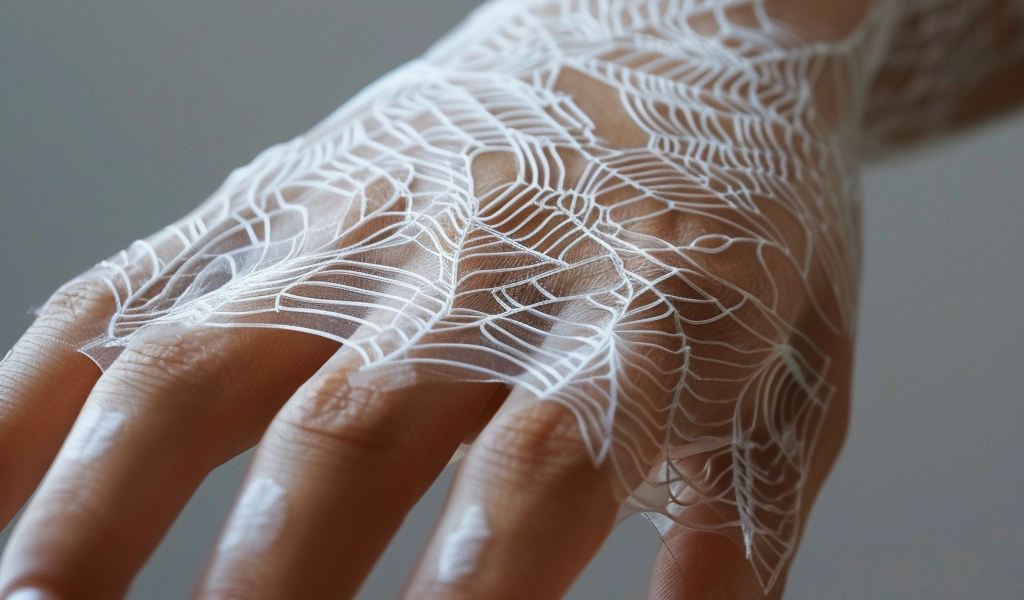Scientists have achieved a remarkable feat by printing invisible, spider silk-like sensors directly on the skin. The fibers used in these sensors are incredibly thin, at least 50 times thinner than a human hair.
Inspired by spider silk, researchers at the University of Cambridge have developed a groundbreaking method to create adaptive and eco-friendly sensors that can be seamlessly printed onto various biological surfaces, such as fingers or flower petals.
The innovative bioelectronic ‘spider silk’ is made from PEDOT:PSS, hyaluronic acid, and polyethylene oxide, spun into high-performance fibers from a water-based solution at room temperature. These fibers, with their intricate web-like structures, can conform perfectly to living surfaces like human skin, exposing sweat pores while remaining undetectable to the wearer.
According to Cambridge professor Yan Yan Shery Huang, the goal is to create bioelectronics that are imperceptible to the user, sustainable, and low waste. This new method offers a promising alternative to current wearable sensor production, as it combines high performance with eco-friendly practices.
These bioelectronic fibers have the potential to revolutionize various fields, including healthcare, gaming, and augmented reality. By printing sensors directly onto the skin, continuous health monitoring, improved understanding of skin sensations, and enhanced gaming experiences could become a reality.





